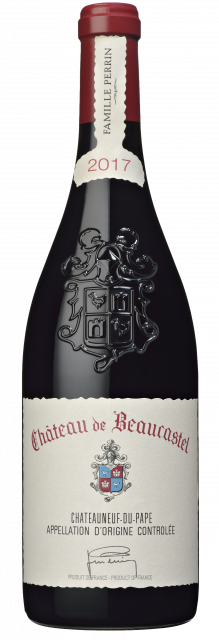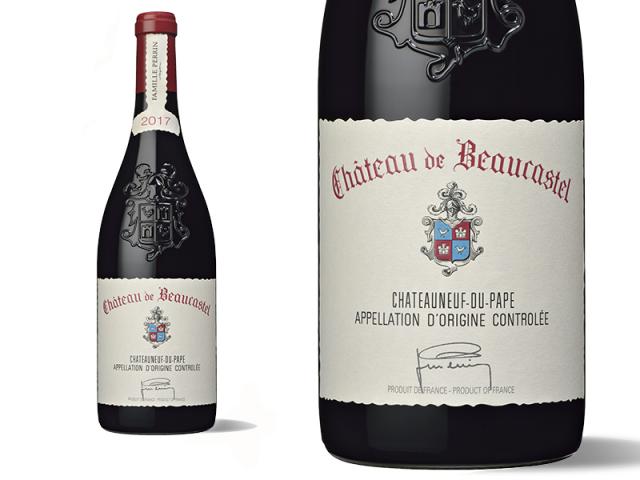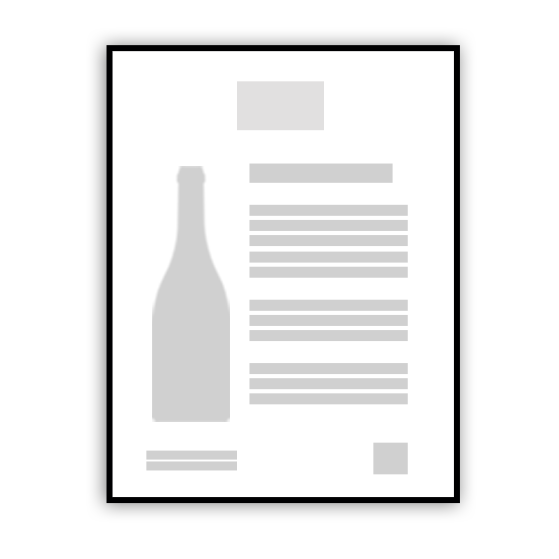PrûÊsentation
Vorstellung
ChûÂteau de Beaucastel ist seit langem als einer der grûÑûten Weine in Frankreich berû¥cksichtigt worden. Es ist bekannt fû¥r seine Eleganz, Ausgewogenheit und Alterungspotential. Beaucastel hat ein auûergewûÑhnliches Terroir an der nûÑrdlichen Grenze der Appellation ChûÂteauneuf du Pape, den Mistral winde ausgesetzt. Alle dreizehn Sorten der Appellation sind seit den sechziger Jahren organisch gewachsen.
Der Jahrgang
2017 ist das Jahr aller Rekorde: das trockenste Jahr seit 30 Jahren, kaum Eingriffe bei den Weinbauarbeiten, optimale Lesebedingungen, sehr geringe Erntemenge aufgrund klimatischer VerûÊnderungen und Weine mit sehr groûem Potenzial.
Lage
ChûÂteauneuf du Pape, zwischen Orange und Avignon, ChûÂteau de Beaucastel Rot ist ein 70-Hektar Weinberg.
Terroir
ChûÂteau de Beaucastel ist 110 Hektar groû, in einem einzigen Grundstû¥ck im Norden der Appellation. Das Terroir ist archetypisch der besten Terroirs in ChûÂteauneuf: Kieselsteine auf der OberflûÊche, Sand, Lehm und Kalk tiefer im Boden. Die Reben sind alt und wurden organisch seit 50 Jahren angebaut, dies ermûÑglicht es den Wurzeln auûergewûÑhnlich tief zu wachsen.
Beaucastel baut alle dreizehn Rebsorten, die durch die Appellation zugelassen sind an.
Beaucastel baut alle dreizehn Rebsorten, die durch die Appellation zugelassen sind an.
Reife
Jede Sorte wird einzeln und von Hand geerntet. Die Weinbereitung erfolgt in EichenfûÊssern fû¥r die reduktiven Sorten (Mourvû´dre, Syrah) und in der traditionellen BetonbehûÊlter fû¥r die oxydative Trauben (alle anderen). Sobald die MilchsûÊuregûÊrung abgeschlossen ist, mischen die Familie Perrin die verschiedenen Sorten. Die Mischung reift dann in EichenfûÊssern fû¥r ein Jahr vor der Abfû¥llung.
Rebsorten
Grenache : 30%
Mourvû´dre : 30%
Syrah : 15%
Counoise : 10%
Vaccarû´se, Terret Noir, Muscardin, Clairette, Picpoul, Picardan, Bourboulenc, Roussanne : 10%
Cinsault : 5%
Mourvû´dre : 30%
Syrah : 15%
Counoise : 10%
Vaccarû´se, Terret Noir, Muscardin, Clairette, Picpoul, Picardan, Bourboulenc, Roussanne : 10%
Cinsault : 5%
Rat
Servieren
Rund 15ô¯C Wenn mûÑglich, dekantieren des Weines.
Verkostung
Der Jahrgang 2017 prûÊsentiert sich tiefgrû¥ndig. Die pure und elegante Nase erinnert an sanfte Kirsche, schwarze Johannisbeere, Gewû¥rze, mit floralen Noten, KrûÊuter (Lorbeer) und dezente Schokolade. Am Gaumen ist er sehr elegant mit reifen und feinen Tanninen, einer schûÑnen Struktur, dicht und konzentriert, mit einer verfû¥hrerisch samtigen Textur, hervorgehoben durch leicht wû¥rzige Frû¥chte.
Der Abgang ist lang, sehr gut durch die eleganten, eingehû¥llten Tannine gestû¥tzt, harmonisch und sehr andauernd (Frû¥chte, Gewû¥rze, florale Noten). Ein groûer Jahrgang !
Der Abgang ist lang, sehr gut durch die eleganten, eingehû¥llten Tannine gestû¥tzt, harmonisch und sehr andauernd (Frû¥chte, Gewû¥rze, florale Noten). Ein groûer Jahrgang !
Bewertungen
"Dûˋgustûˋ juste avant la mise en bouteille. Bouquet rûÇti, de petits fruits noirs, de violette. Millûˋsime trû´s ûˋlûˋgant, longiligne, û la structure imposante. Beaucoup dãallure."
"The 2017 ChûÂteauneuf Du Pape is another sunny, beautifully ProvenûÏal effort that has a huge nose of garrigue, raw steak, leather, truffle, and peppery spice. Medium to full-bodied, concentrated, and balanced, itãs not a massive Beaucastel yet it has a classic, ProvenûÏal, incredibly satisfying style that will benefit from 4-6 years of bottle age and keep for two decades."
"The Grenache and Cinsault are fermented in cement, while the Syrah and Mourvû´dre are in foudre. Finely pixellated fruits of the forest aromas with a full bodied but fresh and lively palate. The Mourvû´dre element is strong, bringing vibrancy and power. Itãs firmly savoury, very dry and dramatic. A seriously structured Beaucastel for the long term. "
"A tremendous effort, might Beaucastel's 2017 Chateauneuf du Pape outshine even the 2016? I tasted a preliminary blend that Marc Perrin said represented 80% of the wine, and it showed ridiculous floral and fresh aromas of licorice, lavender and spice, all backed by tremendous fruit that went beyond black and red and into hints of exotic stone fruit. The final blend will likely contain more than 10% Counoise, the highest proportion ever utilized at the estate. It's rich and concentrated yet silky and lithe, with a fantastically long, elegant finish."
""A dark and winey style, offering a mix of plum, black currant and black cherry notes, infused with black tea, fruitcake and anise accents. Solidly built, vibrant and energetic from start to finish, this carries copious fruit easily through the lengthy finish. Grenache, Cinsault, Syrah, Mourvû´dre and Counoise. Best from 2020 through 2040.""
"Dark bright-rimmed ruby. Ripe black and blue fruit liqueur, incense, smoked meat and candied lavender qualities on the deeply perfumed, spice-accented nose. Broad and fleshy in the mouth, offering intense black raspberry, bitter cherry and fruitcake flavors that tighten up and turn livelier with air. Shows plenty of energy for a hot-vintage wine and finishes impressively long and chewy, with mounting tannins and repeating smoke and floral notes."
"ãThe maturity of the roussanne is immediately apparent
with such richness, ripeness and attractive fleshy drive on
the palate and a phenolic structure that sustains the length
handsomely. Concentrated and super fleshy. A blend of 60%
roussanne, with grenache blanc and other varieties. Drink
over the next eight years.ã" [+]
with such richness, ripeness and attractive fleshy drive on
the palate and a phenolic structure that sustains the length
handsomely. Concentrated and super fleshy. A blend of 60%
roussanne, with grenache blanc and other varieties. Drink
over the next eight years.ã" [+]


